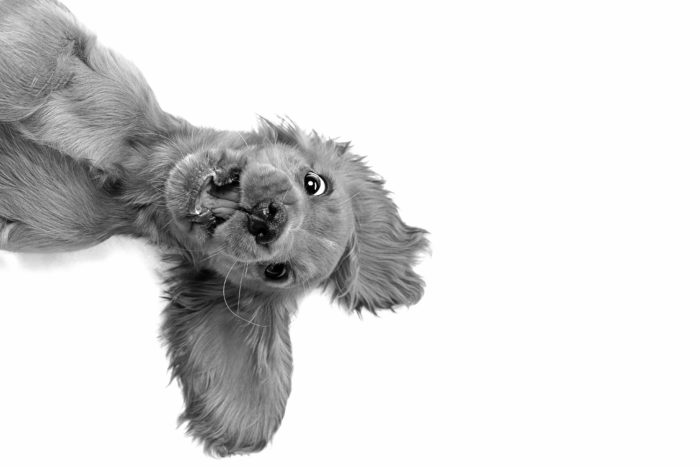Food as Payment
Many of the behaviors we want our dogs to do are not top of the list for your dog. That’s why using food as payment is key to your success. Teaching them particular behaviors such as walking without pulling on the leash, or calling them away from a fabulous wrestling match with their pals, or requesting that they don’t sniff a dead bird may prove to be challenging for anyone who does not work to install an interest in their dog to engage with them.
Many of the behaviors we want our dogs to do are not top of the list for them!
That’s what the food as payment is all about: it is a motivator. It is payment for a job well done. There are things everywhere that the puppy and adult dog will deem to be more interesting than we are. We need to give them a reason to want to check in with us or perform a behavior we request. Would you work for free? Probably not, so why would your dog? Food is one of the most potent motivators for animals and since they won’t accept cash, teach your puppy using food.
Food is considered a primary reinforcer.
Walt Disney was wrong. A dog is not born wanting to please us and carry out our bidding. A food-motivated dog is a good thing. A behavior that is reinforced with a treat (coming to you or sitting) is more likely to occur again. Food treats should be tiny, tasty, and smelly. In many cases you will also use the puppy’s food (see Food Bowl and Hand Feeding exercises in Prevention. Train when the pup is more interested in food, not stuffed from or meal, and not famished.
It is important to make the distinction that the food is not a bribe. Do you think of your salary as an immoral or dishonest incentive? Working with treats is a form of positive reinforcement.
As a certain behavior becomes more reliable you may not use as much reinforcement but as I once heard the wonderful Dr. Susan Friedman say, ‘If I am there to cue a behavior, I am there to reinforce it!’ Food is a powerful training tool and an important one. Don’t be in a hurry to not use it. (See Tracking your Training Progress for a handy chart).
Be liberal with your reinforcement. Some of the wonderful byproducts of this are trust, confidence, and happiness! Experiment with different treats and learn your dog’s preferences. Remember it is your dog that gets to decide what is reinforcing. If he is lackluster about the treats you are using consider upping your game! Use a treat pouch and keep it well stocked. Don’t leave home without it.
A tip if you feed dry food to your puppy. Measure out the food and place in a plastic bag with a zip closure. Add a titch of broth or grated cheese, some pulverized dried liver dust, and some bits of cooked fresh meat. Shake it up and let it sit. Use this food over the day for games, training, and work-to-eat toys.
If need be you can adjust your puppy’s food to compensate for the number of treats he is getting. Most pups do great with their daily food ration and lots of high-quality, high-value reinforcement. Growing pups need a lot of calories.
Remember, use very tiny pieces. (See also Educate, Motivate, and Stimulate! in Prevention).
In the eyes of your dog, not all food is rated equal. From his perspective, kibble or dry food may get a lower rating, whereas something like boiled chicken, dried liver, or a piece of cheese rates very high.
| Food/reward |
$$ equal |
| Steak |
Jackpot! |
| Cheese, dried liver, hot dog |
$50 |
| Boiled chicken |
$20 |
| Soft dog treats |
$10 |
| Hard biscuit or kibble |
$0.25 |
| Pat on the head |
Free |
When a certain amount of behavior or information has been learned, there will often be resistance to learning new things until the initial behavior or information becomes fully absorbed and adopted. This is true of humans as well as puppies. It is not clearly understood what boosts the next stage of learning. This is an important phenomenon that you should be aware of when training.
Often when a pup is slightly stressed or overwhelmed he will exhibit this behavior.
During training sessions with your puppy, you may observe him yawning or scratching himself as though he has an itch. Many times what we are observing is called displacement behavior. Often when a pup is slightly stressed or overwhelmed he will exhibit this behavior. If you are working on teaching your puppy something and you see him doing this, he is probably trying to digest what is being taught and it also may be a little stressful for him. To relieve some of the tension that he feels, he yawns and scratches.
Let’s face it, puppies can be a handful and a lot to keep up with. There are going to be times when the pup is up to something that we are not going to want him doing. Remember it is our responsibility to keep the pup safe and under control. The crate is there for the pup’s safety and comfort and, in some cases, your sanity. When the pup does have the opportunity to get into something you don’t like, how should you react?
At any point during the training process, if things begin to deteriorate, backtrack and set your puppy up to succeed. In other words, do something you know your dog is capable of, or take a break!

